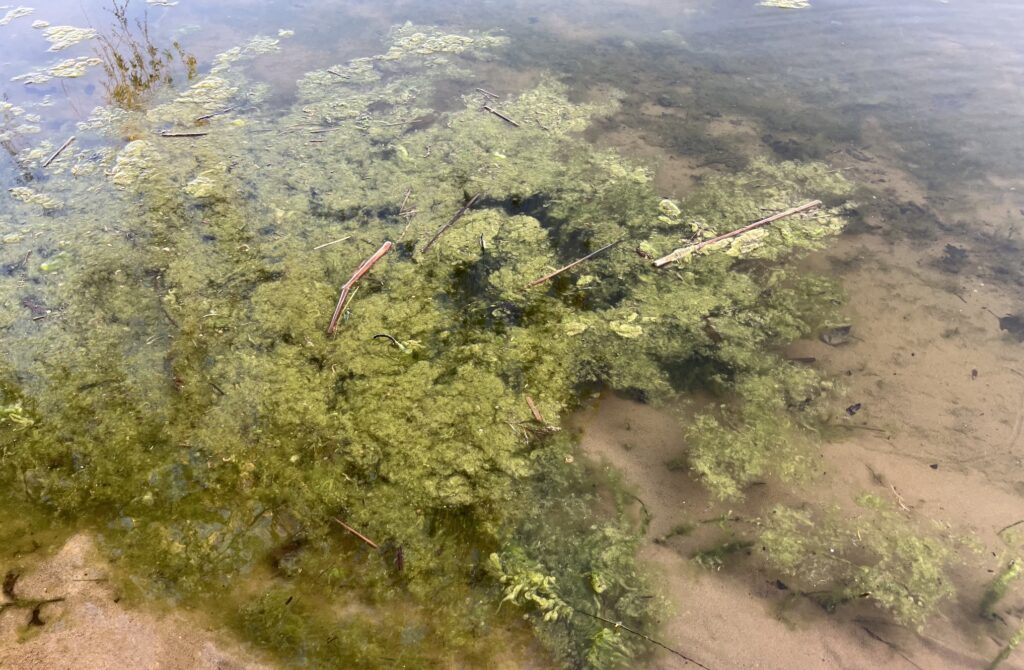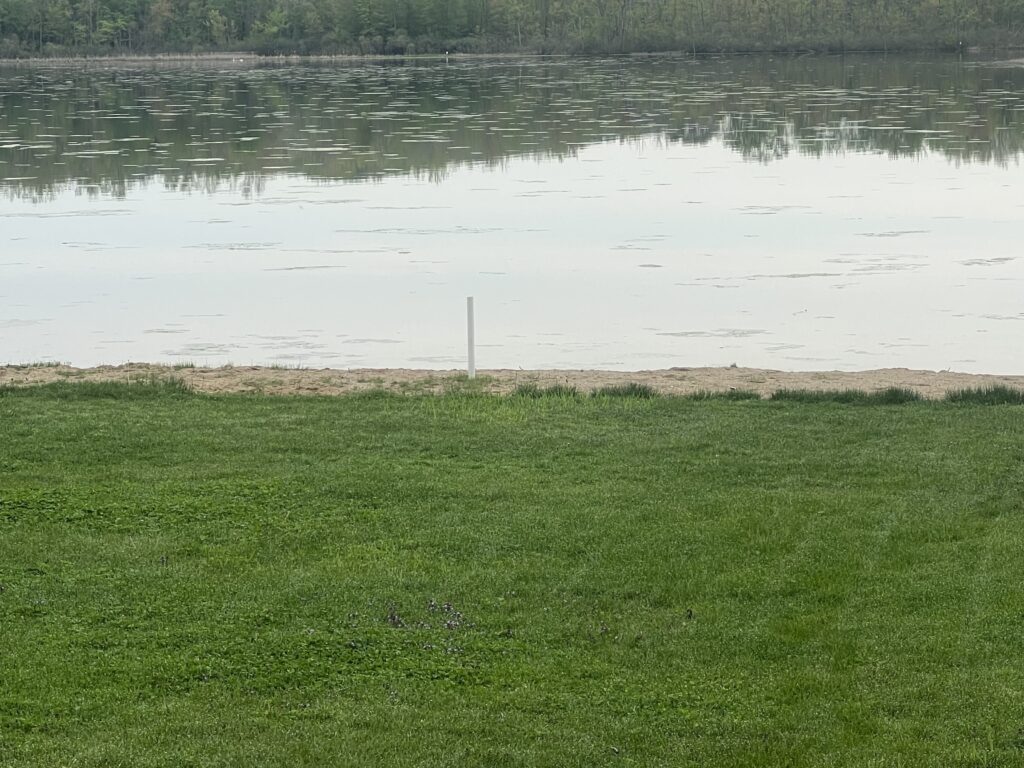Algae Observed – Spring 2023
We have received reports and observed wide-spread algae blooms in the past couple weeks. In many cases the blooms have dissipated within a few hours or a day – especially with wind or boat activity.
We contacted our representative at ProgresiveAE to confirm and get their advise. We asked specifically for typical causes, are they seeing much of this right now, does it pose safety concerns, and if action is needed to address it.
They responded quickly and their answers below in italics (edited slightly for clarity in reposting).
They also provided two fact sheets – linked at the bottom of this post.
What are we observing


Due to the recent warm weather and the slower growth of macrophytes (rooted aquatic plants) in the spring, algae growth has been significant on many inland lakes this spring. The primary reason is that the portion of available nutrients, primarily phosphorus, is higher in the water column when rooted plants are not using them. Therefore, algae are currently the dominant plant form until the macrophytes start to catch up and use more available phosphorus.
Once this occurs, algae growth will likely dissipate. Wind, wave action, and rain will also cause algae mats to break up and dissipate over time – particularly on larger, wind-swept lakes – such as Miner Lake.
Safety Concerns
Most folks will avoid swimming in heavily infested algae areas. However, dogs and small children have a greater tolerance for these conditions. This time of the year, the common alga types are Cladophora and Spirogyra which are not harmful if ingested, but probably don’t taste very good.
Treatment Options
We recommend not treating the algae at this time.
Although algae can be controlled using copper algaecides, the potential negative effects on fish spawning in nearshore areas may outweigh the short-term benefit of treatment.
Also, the pictures you sent indicate wide-spread algae – treatments are limited to developed shoreline areas only out to 100-feet from shore (or the five-foot contour in steeply sloped areas). Therefore, only a relatively small portion of the existing algae will be treated in this scenario.
Upcoming Visit – Plant Survey
Our team will be conducting a survey on May 22, and he will note if any significant algae still is present at that time prior to the Memorial Day holiday.
Conclusion
Based on the information provided, we do not plan on taking any immediate action and do not advise residents to treat for algae independently. Please remember that these issues are driven by phosphorus concentrations and the primary controls we have for addressing that are limiting our direct fertilizer use and eliminating nutrient-rich waste water from our homes and cottages.
We will continue to monitor the algae and welcome any observations or concerns as it may have a higher density in some portions of the lake.
Additional Resources:
Harmful Algae Blooms fact sheet
Phosphorus fact sheet

Robert Brabon
May 12, 2023
Channel between Forrest & Loraine Drive w/thick mat, needs treatment